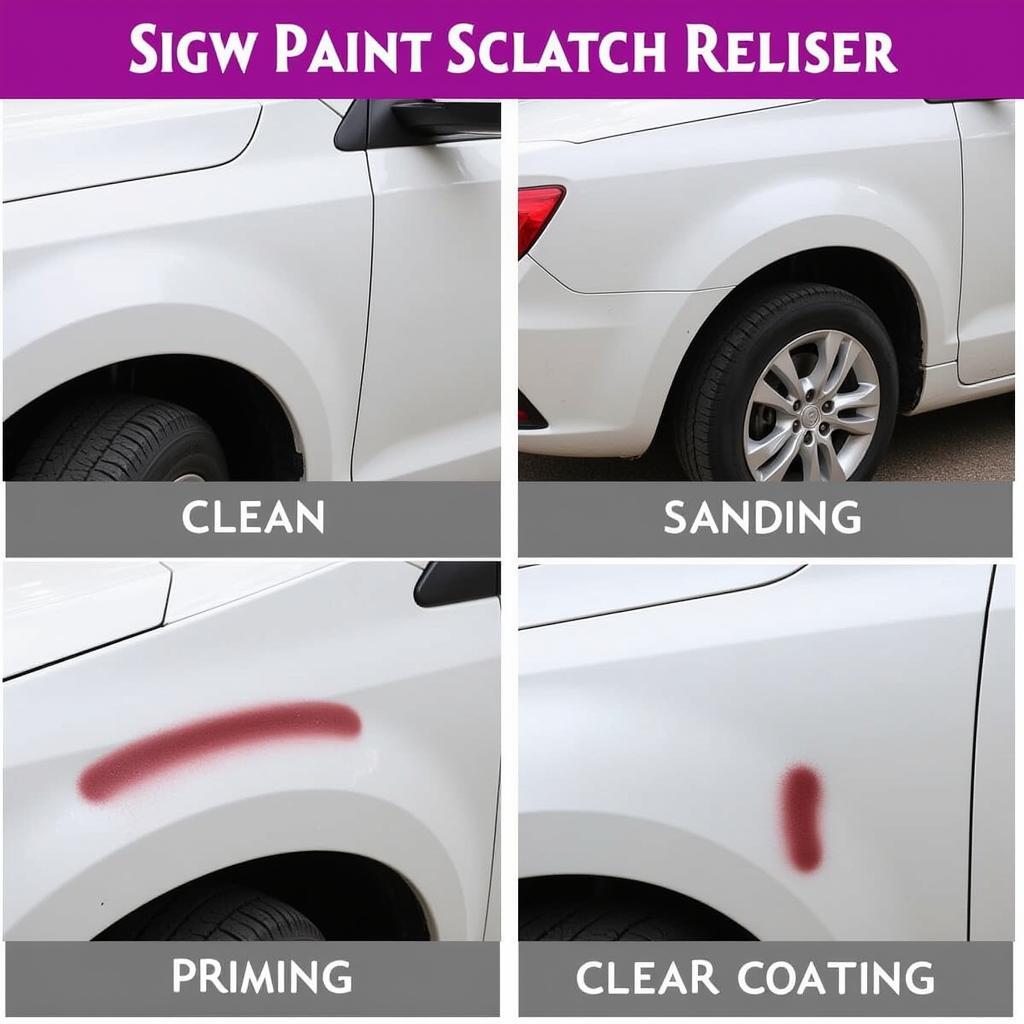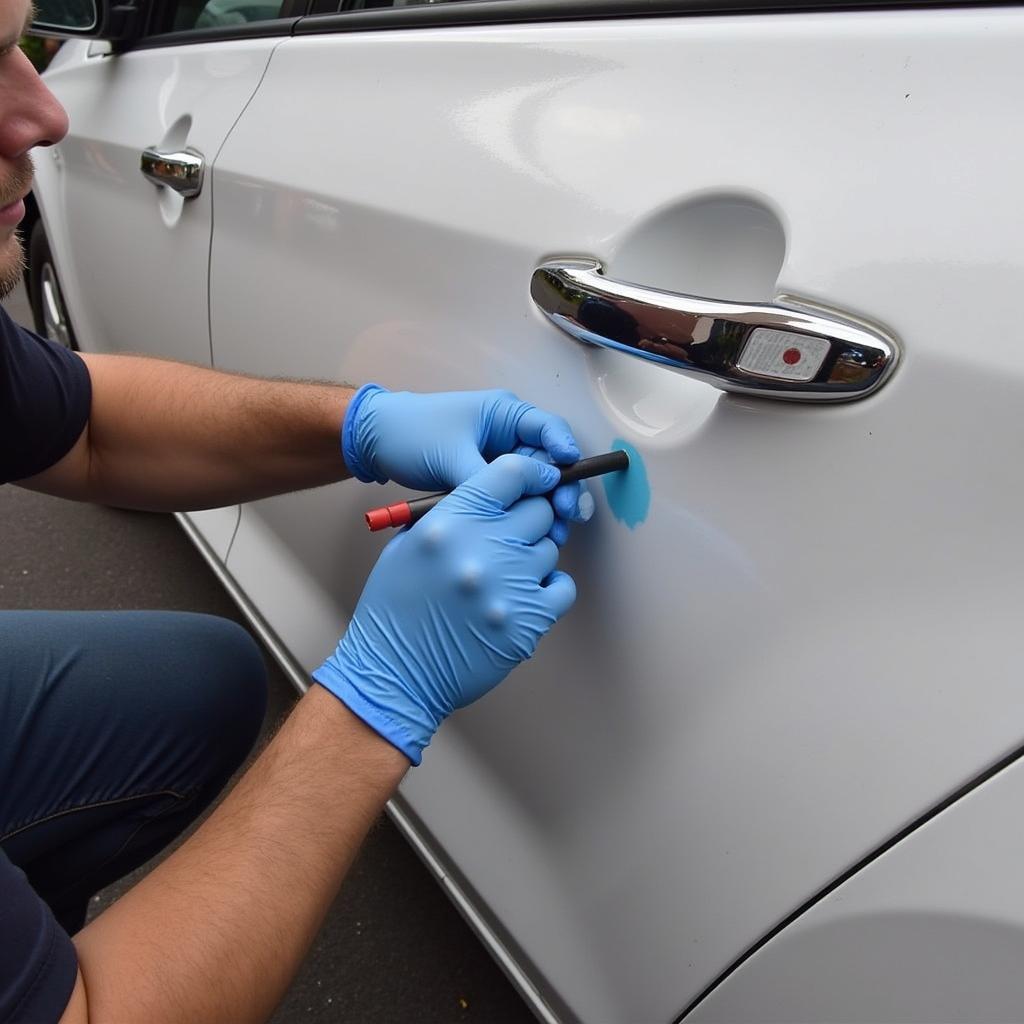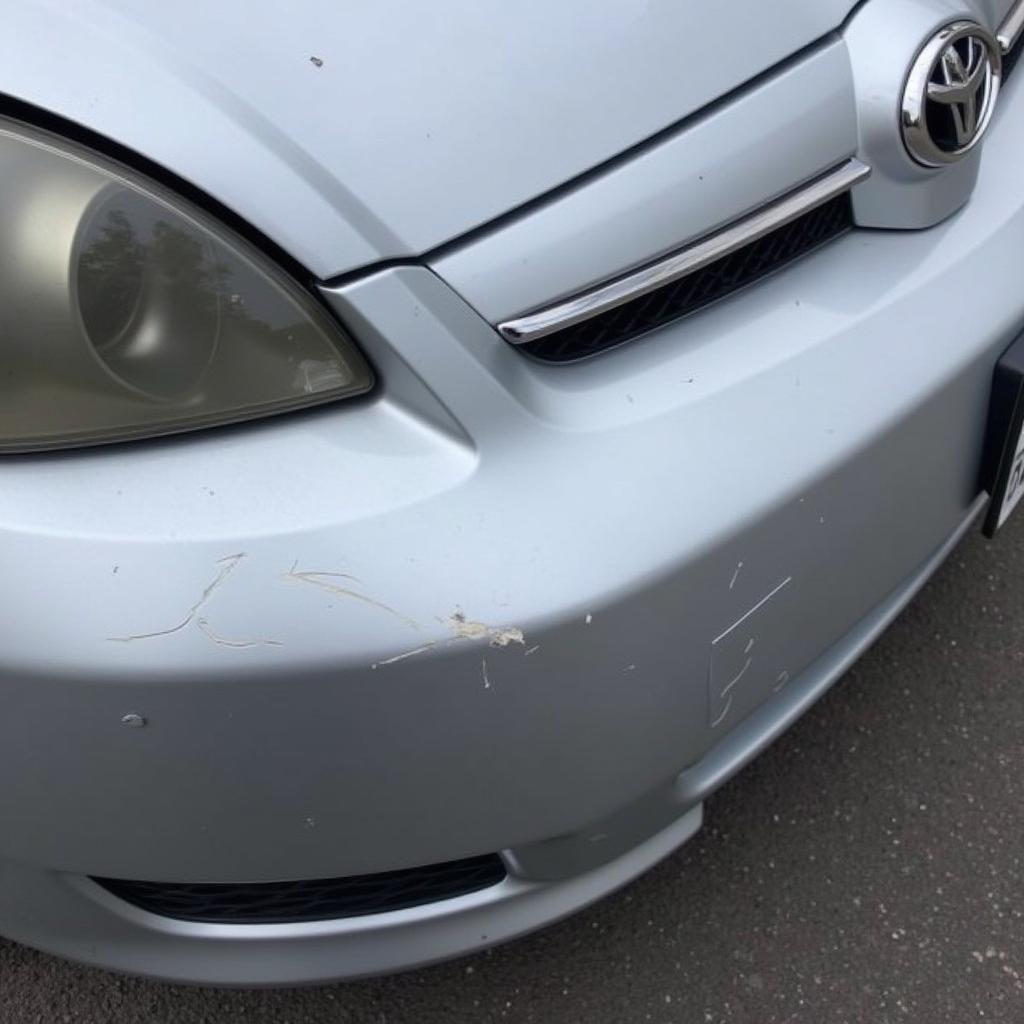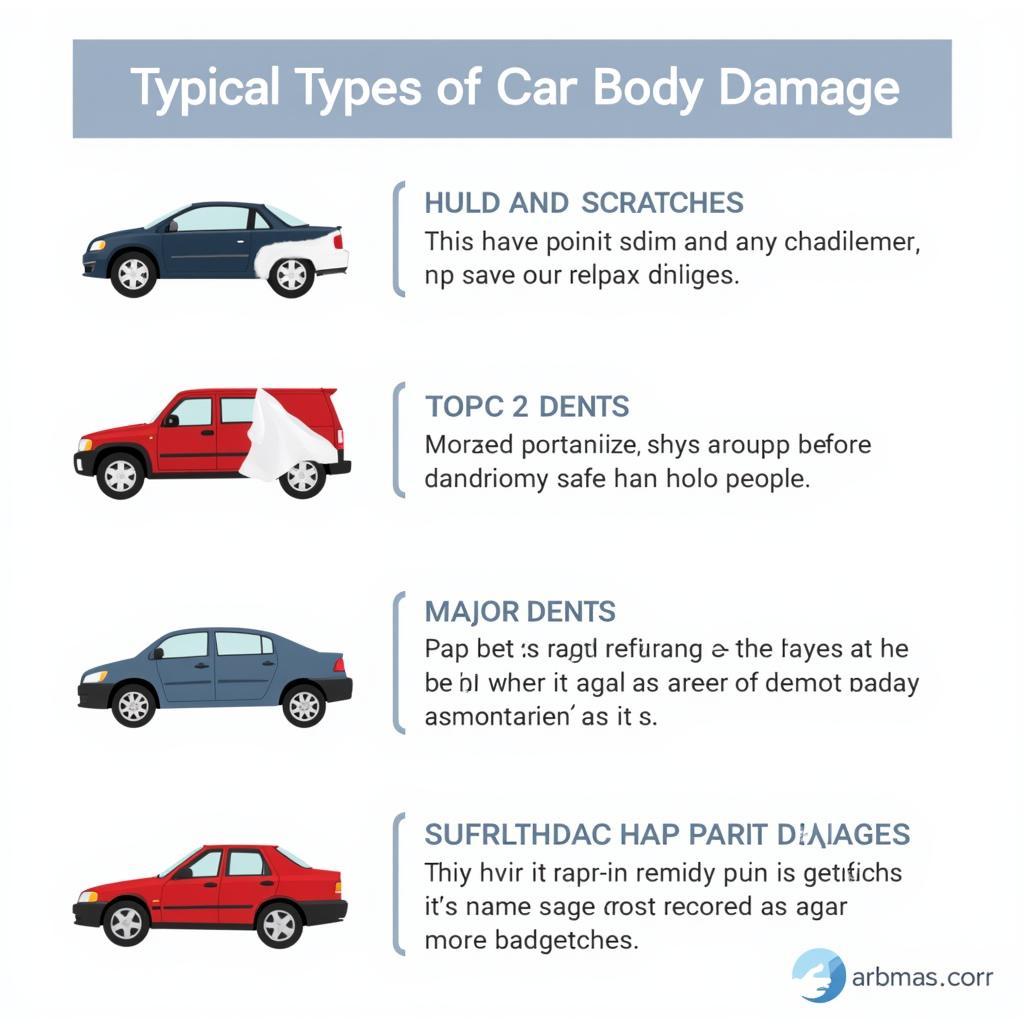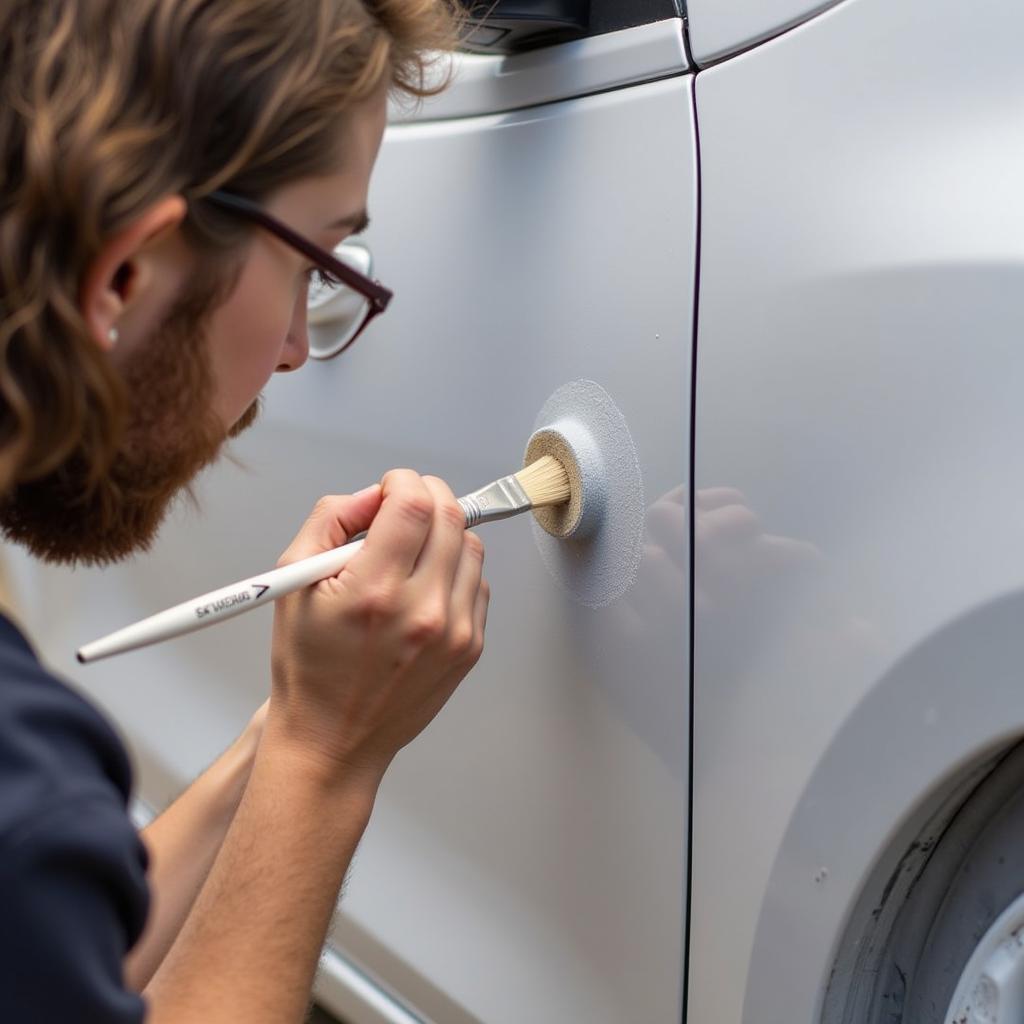
Applying touch-up paint to a car's spot repair
Sanding spot repair blending paint on a car is a cost-effective way to address minor paint damage without repainting the entire panel. This technique requires precision and patience, but with the right tools and knowledge, you can achieve professional-looking results. It involves carefully sanding the damaged area, applying primer and paint, and then seamlessly blending the new paint with the existing finish. This article will delve into the intricacies of this process, offering expert tips and advice for a flawless repair.
Learning the art of sanding spot repair blending paint can save you significant money compared to a full panel respray. For a deeper understanding of the costs involved in car paint repair, see our guide on cost to repair car paint damage.
Understanding Sanding Spot Repair and Paint Blending
Sanding spot repair focuses on fixing small areas like scratches, chips, and scuffs. Blending ensures a smooth transition between the repaired area and the original paint, making the repair virtually invisible. This technique is best suited for minor damage and not extensive areas of rust or deep dents. Proper preparation is crucial, including cleaning the area, masking off surrounding surfaces, and selecting the correct grit sandpaper.
What grit sandpaper should you use for blending paint? Starting with a coarser grit (e.g., 1500-grit) to remove the clear coat and level the damaged area is recommended. Then, gradually move to finer grits (e.g., 2000-grit, 3000-grit) to refine the surface and prepare it for painting.
Essential Tools and Materials for Blending Paint on Your Car
Having the right tools and materials is paramount for successful spot repair and paint blending. These include:
- Sandpaper (various grits)
- Sanding block
- Masking tape and paper
- Primer
- Touch-up paint
- Clear coat
- Polishing compound
- Microfiber cloths
- Tack cloth
A well-lit workspace is also crucial for seeing imperfections and ensuring a smooth blend. For guidance on sanding and blending paint, you can refer to our detailed guide on how to sanding spot repair blending paint on car.
Step-by-Step Guide to Sanding Spot Repair Blending Paint on Car
- Clean the area: Thoroughly clean the damaged area with soap and water, then use a wax and grease remover.
- Mask the surrounding area: Protect the surrounding paint with masking tape and paper.
- Sand the damaged area: Start with a coarser grit sandpaper and gradually move to finer grits. Feather the edges of the sanded area to create a smooth transition.
- Apply primer (if necessary): If the damage reaches the metal, apply a thin coat of primer.
- Apply touch-up paint: Apply several thin coats of touch-up paint, allowing each coat to dry before applying the next.
- Apply clear coat: Once the paint is dry, apply a few thin coats of clear coat.
- Wet sand and polish: After the clear coat has cured, wet sand with fine-grit sandpaper and polish to achieve a smooth, glossy finish.
 Applying touch-up paint to a car's spot repair
Applying touch-up paint to a car's spot repair
Common Mistakes to Avoid
- Using the wrong grit sandpaper
- Applying too much paint at once
- Not blending the paint properly
- Not allowing sufficient drying time between coats
- Failing to polish the repaired area
“Patience and attention to detail are key to a successful spot repair. Don’t rush the process,” advises John Smith, Senior Auto Body Technician at Smith Auto Repairs.
If you’re dealing with paint repair on a classic car’s trunk, check out our specialized guide on classic car trunk paint repair. For repairs that require attention above the primer layer, see our article on car paint repair above primer.
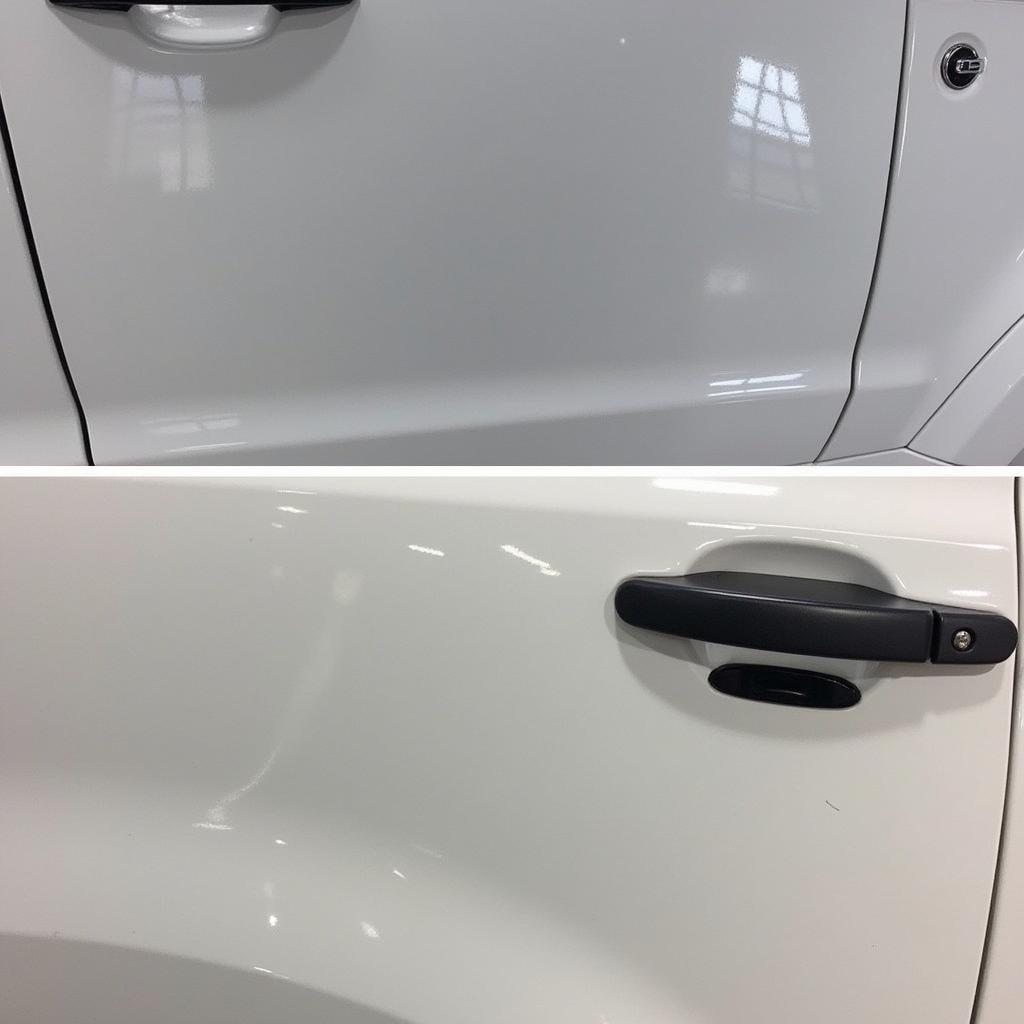 Polished car spot repair after paint blending
Polished car spot repair after paint blending
Conclusion
Sanding spot repair blending paint on a car can effectively address minor paint damage without breaking the bank. Following the proper steps and avoiding common mistakes will lead to professional-looking results. Remember to be patient and take your time for a seamless and invisible repair. For advice on mobile car paint scratch repair, visit our guide on mobile car paint scratch repair.
FAQs
- Can I blend paint on any car? Yes, but the technique works best on smaller areas of damage.
- What type of paint should I use? Use touch-up paint that matches your car’s original paint code.
- How long does the repair take? It can take several hours, including drying time between coats.
- Is it difficult to blend paint? It requires practice and patience, but with the right guidance, it’s achievable.
- When should I seek professional help? For extensive damage or if you’re unsure about the process, consult a professional.
- How can I find my car’s paint code? Your car’s paint code is usually located on a sticker inside the driver’s side doorjamb or in the owner’s manual.
- What if the blended area doesn’t match perfectly? You can try polishing the area to further blend the paint.
If you need further assistance or have any questions, feel free to contact us via WhatsApp: +1(641)206-8880, or email us at [email protected]. Our customer service team is available 24/7.

